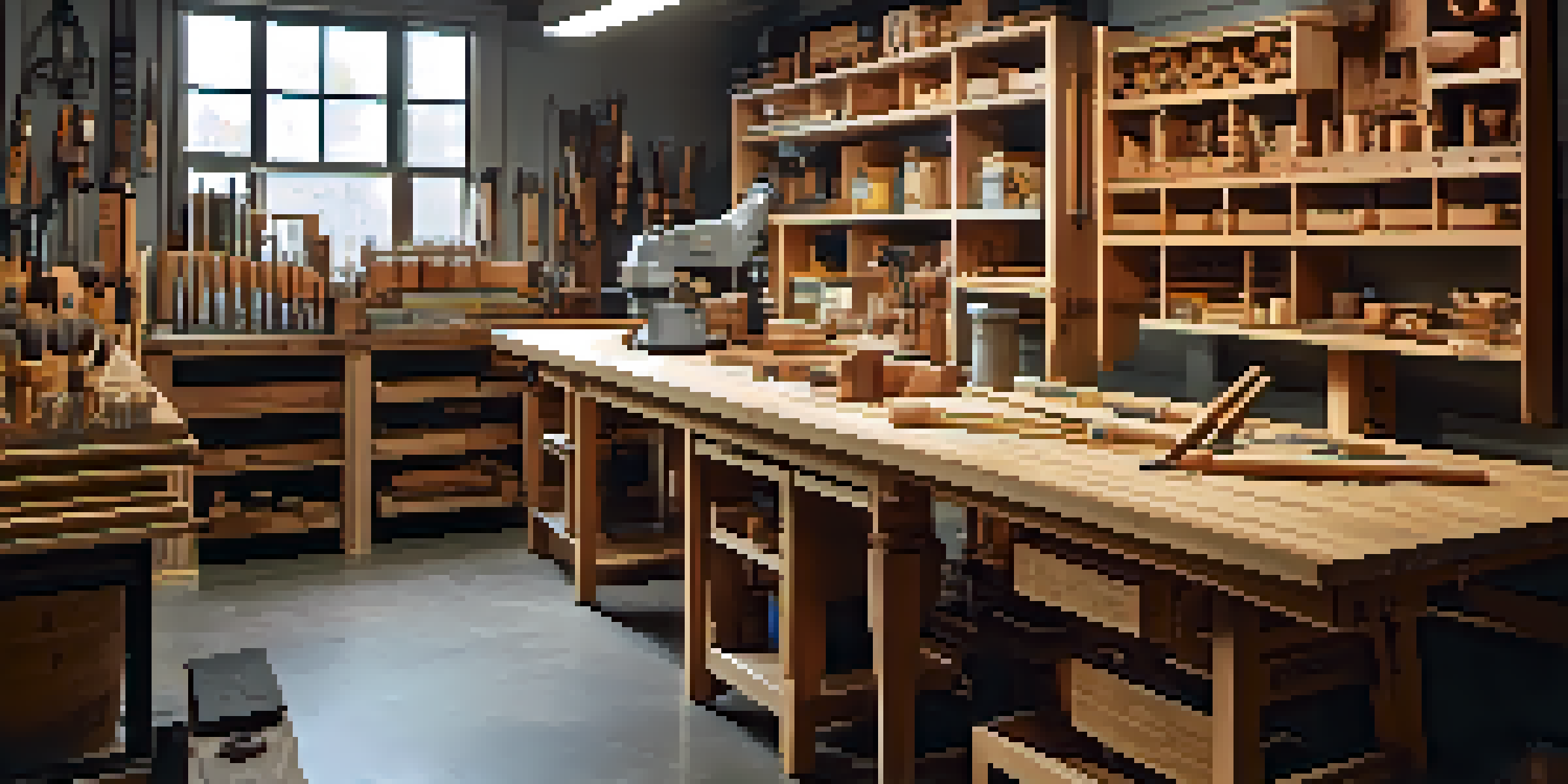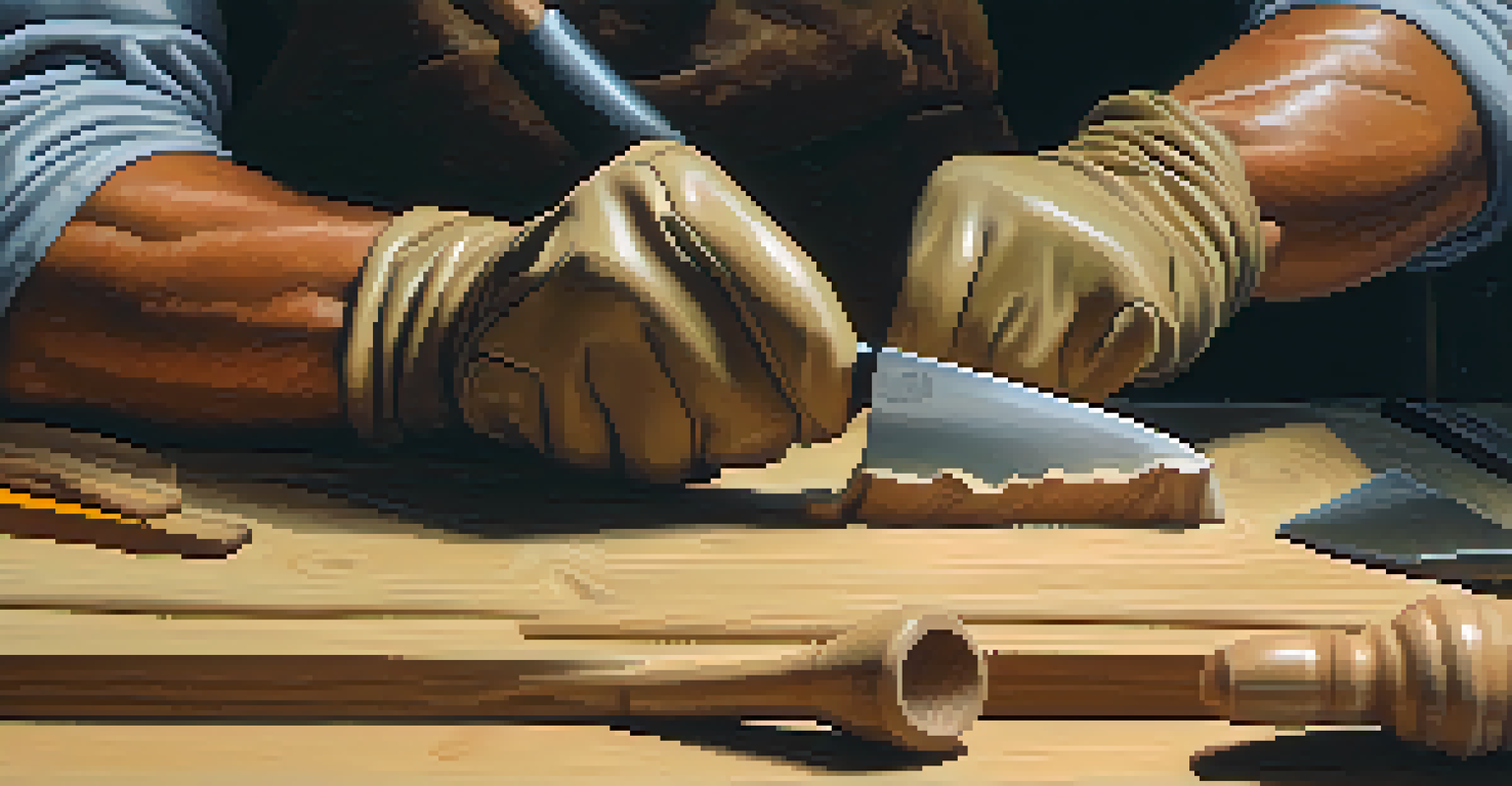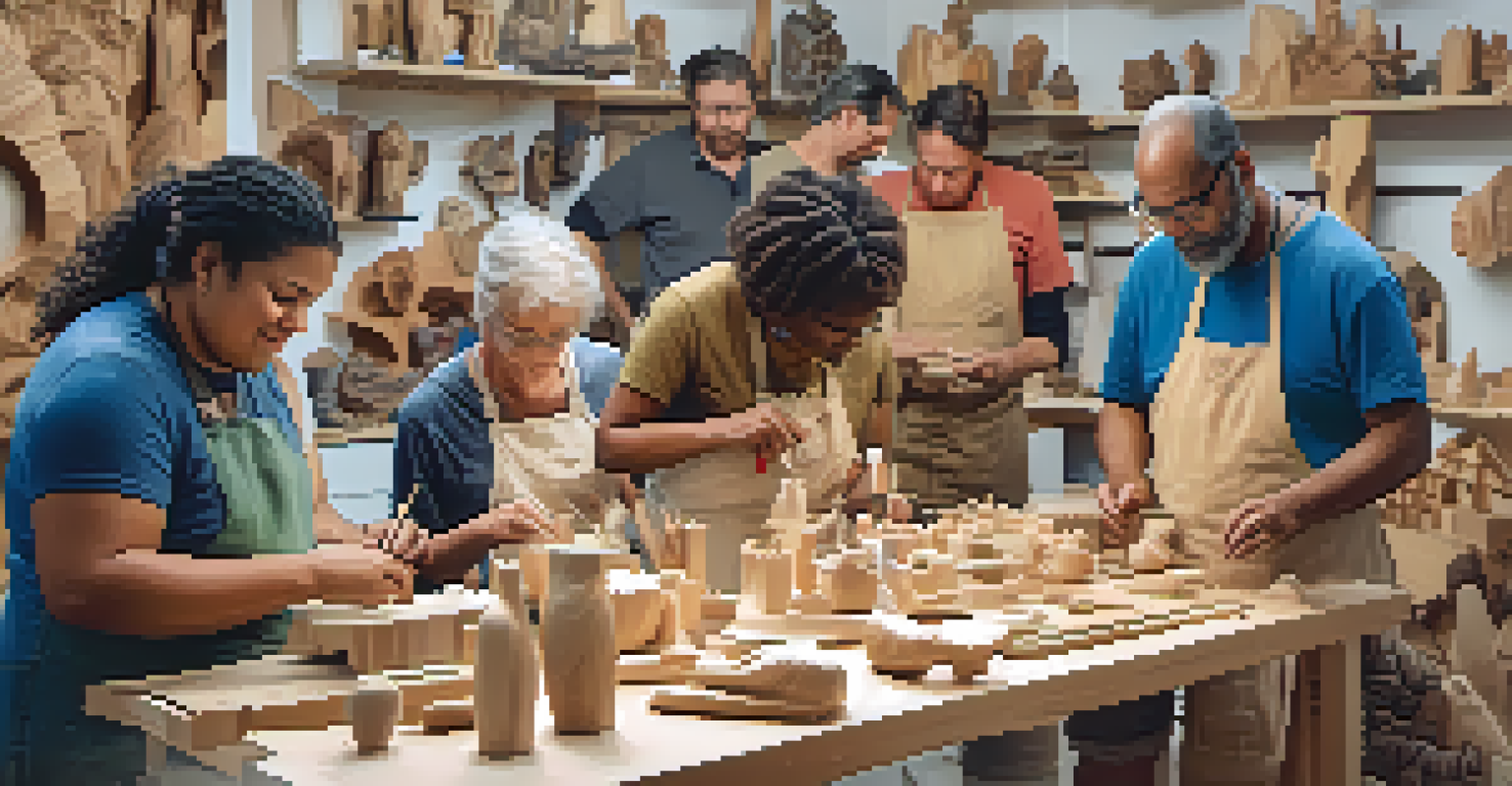Safety First: Best Practices for Carving with Tools

Understanding the Importance of Safety in Carving
Carving can be a rewarding craft, but safety should always come first. It’s easy to get lost in the creative process and forget about potential hazards, but a moment of distraction can lead to serious injuries. By prioritizing safety, you not only protect yourself but also ensure a better crafting experience overall.
Safety isn't just a slogan, it's a way of life.
Injuries from carving can range from minor cuts to more severe accidents. To avoid these, it's crucial to establish a safe workspace and be mindful of the tools and materials you are using. Remember, a simple slip can result in a trip to the emergency room, which is not the kind of adventure you want when you're working on your art.
By understanding the risks involved and implementing safety practices, you can enjoy carving with peace of mind. Think of safety measures as a foundation for your carving project; without them, everything else can crumble. So, let’s delve into some best practices that can keep your carving experience enjoyable and accident-free.
Choosing the Right Tools for Safe Carving
The tools you choose can have a significant impact on your safety while carving. Opt for high-quality, ergonomically designed tools that fit comfortably in your hand. This not only ensures better control but also minimizes the risk of strain or fatigue, which can lead to accidents.

Additionally, ensure that your tools are well-maintained. Dull blades require more force to cut, increasing the likelihood of slips. Just like a chef needs a sharp knife to prepare a meal safely, a carver needs sharp tools to carve effectively and safely.
Prioritize Safety in Carving
Establishing safety practices protects you from injuries and enhances your crafting experience.
Investing in the right tools is like setting up a solid base for a house; it supports everything you do. So, before you start your carving project, take the time to select tools that enhance both your safety and your creative process.
Setting Up a Safe Carving Workspace
Creating a dedicated workspace can make a world of difference when it comes to safety. Choose a well-lit area with ample space to move around freely. A clutter-free environment reduces distractions and minimizes the risk of accidents as you carve.
The best tools are those that help you stay safe while you create.
Consider using a sturdy workbench or table that can securely hold your materials. This stability allows you to focus on your carving without worrying about your pieces shifting unexpectedly. Just like a painter needs a solid easel, a carver needs a reliable surface.
Also, keep all your tools organized and within reach. This not only speeds up your workflow but also prevents you from having to reach across sharp edges, which can be dangerous. By investing time in setting up your workspace, you’re laying the groundwork for a safer carving experience.
Wearing Appropriate Safety Gear While Carving
Just like you wouldn’t go hiking without sturdy boots, you shouldn’t carve without the right safety gear. Protective eyewear is essential to keep your eyes safe from flying debris or accidental slips. A pair of goggles can make a significant difference in protecting your vision.
Moreover, consider wearing cut-resistant gloves. These gloves can help prevent injuries if a blade slips, giving you peace of mind while you carve. It’s similar to wearing a seatbelt; you may not think you need it until it’s too late.
Choose Quality Carving Tools
Using high-quality, well-maintained tools minimizes the risk of accidents and improves control.
Finally, wearing an apron can protect your clothing and provide an extra layer of safety. This simple addition helps keep your workspace clean and your clothes intact. Investing in safety gear is an investment in your well-being, allowing you to focus on creativity without unnecessary worry.
Mastering Proper Carving Techniques for Safety
Using the right carving techniques is vital not just for the quality of your work but also for your safety. Always carve away from your body, keeping the blade directed away from your hands and limbs. This simple habit can dramatically reduce the risk of injury.
Additionally, keep your hands dry and avoid distractions while carving. Just like a tightrope walker needs complete focus, you need to concentrate on the task at hand. If you feel tired or unfocused, take a break to recharge.
Lastly, practice makes perfect. Start with small projects to hone your skills and build confidence. The more comfortable you become with your techniques, the safer you’ll be, turning carving into a truly enjoyable experience.
Keeping Your Work Area Organized and Neat
An organized workspace contributes significantly to safety while carving. Keep all tools in designated spots and materials neatly stored. This practice not only improves efficiency but also reduces the chances of accidents caused by clutter.
Use containers or racks to store your tools, ensuring they are easily accessible yet out of the way when not in use. Think of it like a chef organizing their kitchen; a clean space allows for creativity to flow without hindrance.
Maintain an Organized Workspace
Keeping your carving area tidy reduces distractions and lowers the chances of accidents while working.
Every time you finish a project, take a few moments to tidy up. This habit ensures that each carving session begins with a clean slate, promoting safety and focus. Remember, a well-organized workspace is a happy workspace!
Knowing When to Seek Help in Carving Projects
Sometimes, the best way to ensure safety is to ask for help. If you’re unsure about a technique or feel uncomfortable with a specific tool, don’t hesitate to reach out to experienced carvers. Learning from others can provide valuable insights and enhance your skills.
Joining a carving group or community can also be a great way to share knowledge and safety tips. Much like a sports team, working together can boost everyone’s skills and ensure that safety practices are followed. Plus, you might make some friends along the way!

Remember, seeking help is a sign of strength, not weakness. Embracing the learning process allows you to grow as a carver while prioritizing safety. So, don’t be afraid to lean on others as you embark on your carving journey.